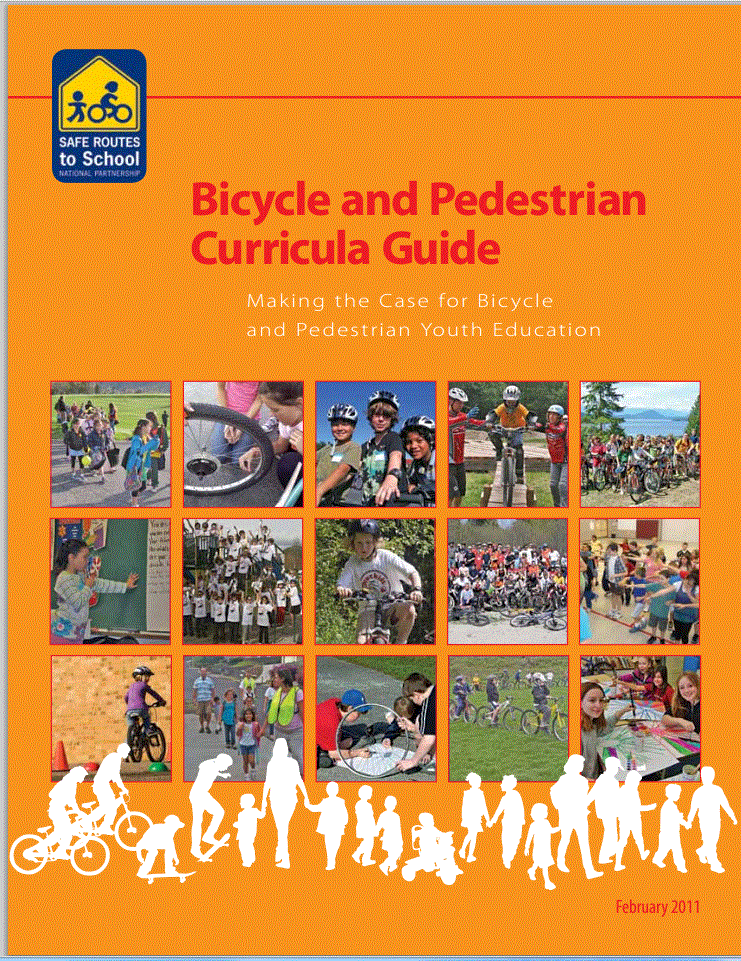 Over the past decades bicycle safety education has developed into its own field, ultimately being implemented in a variety of ways, depending primarily on the amount of time and resources available to convey important concepts. These choices are not easy and inevitably we, as educators, must make informed compromises.
Over the past decades bicycle safety education has developed into its own field, ultimately being implemented in a variety of ways, depending primarily on the amount of time and resources available to convey important concepts. These choices are not easy and inevitably we, as educators, must make informed compromises.
Resource Library
These briefings sheets were developed with funding support from the National Center for Safe Routes to School. The briefing sheets are intended for use by transportation engineers and planners to support their active participation in the development and implementation of Safe Routes to School programs and activities.
 Freedom. It means different things to different people. As a child, freedom to me meant a whole Saturday to ride my bike, named Winning Colors in honor of the female horse that won the1988 Kentucky Derby, across ditches, dirt roads, woods, marshes, and the occasional paved street.
Freedom. It means different things to different people. As a child, freedom to me meant a whole Saturday to ride my bike, named Winning Colors in honor of the female horse that won the1988 Kentucky Derby, across ditches, dirt roads, woods, marshes, and the occasional paved street.
By using SB 375 as an opportunity for taking control of future gowth and transportation decisions through regional planning, communities can stimulate construction and economic growth, reduce vehicle pollution, save money, and improve transportation choices.
 As we have discussed in previous posts, the U.S.
As we have discussed in previous posts, the U.S.
On May 8, 2012, the Institute of Medicine (IOM) released a consensus report funded by the Robert Wood Johnson Foundation Accelerating Progress in Obesity Prevention: Solving the Weight of the Nation. Two-thirds of adults and one-third of children are overweight or obese.
This fact sheet provides an overview for advocates and community members on the benefits of complete streets policies. NPLAN has models and findings that you can tailor and use in your community.
 As students all across the state of Tennessee head back to school, children in Knoxville have police officers stepping up efforts to make sure safety is first. In order to reduce the number of pedestrian crashes, the Knoxville Police Department (KPD) and the Knox County Safe Routes to School Partnership will implement a program to educate drivers about yielding to pedestrians i
As students all across the state of Tennessee head back to school, children in Knoxville have police officers stepping up efforts to make sure safety is first. In order to reduce the number of pedestrian crashes, the Knoxville Police Department (KPD) and the Knox County Safe Routes to School Partnership will implement a program to educate drivers about yielding to pedestrians i
This article highlights the impact the bicycle industry and bicycle tourism have on state and local economies; describes the need for bicycle facilities, discusses the cost-effectiveness of investments, points out the benefits of bike facilities for business districts and neighborhoods, and identifies the cost savings associated with mode shift.
 The Greek philosopher Thales and the Roman poet Juvenal both wrote about the way in which physical health and mental health are intertwined, seeking the ideal of a “sound mind in a sound body.”
The Greek philosopher Thales and the Roman poet Juvenal both wrote about the way in which physical health and mental health are intertwined, seeking the ideal of a “sound mind in a sound body.”
The purpose of this guide is to help bicycle advocates review transportation projects to ensure that bicycle facilities are included inthe design. The construction, retrofit or expansion of a public road involves many steps by local, regional and state governmental agencies.
Transform created this report to highlight data that examines the full economic impact of transportation policies.
 “Are they going to kill me?”
“Are they going to kill me?”
This report summarizes laws addressing liability for use of recreational facilities from each state.
Blog by Allyson Felix, Six-time U.S. Olympic Track & Field Medalist and President’s Council on Fitness, Sports & Nutrition member
Platforms: Fitness.gov, www.letsmoveschools.org, Fire Up Your Feet, USATF

This website provides reports, tools, and resources to support implementation of joint use agreements.
 Today, the Senate Environment and Public Works Committee (EPW) unveiled their new six-year transportation bill. The DRIVE Act (Developing a Reliable and Innovative Vision for the Economy Act) primarily shores up our existing interstate and road-focused transportation system. Unsurprisingly given its name, the bill does not adequately address the needs of communities al
Today, the Senate Environment and Public Works Committee (EPW) unveiled their new six-year transportation bill. The DRIVE Act (Developing a Reliable and Innovative Vision for the Economy Act) primarily shores up our existing interstate and road-focused transportation system. Unsurprisingly given its name, the bill does not adequately address the needs of communities al
Joint Use Agreement 4: Joint Use of District and City Recreation Facilities is a model agreement in which the school district and local government agree to open all or designated recreational facilities to each other for community and school use. It also allows for third parties, such as youth organizations or youth sports leagues.


